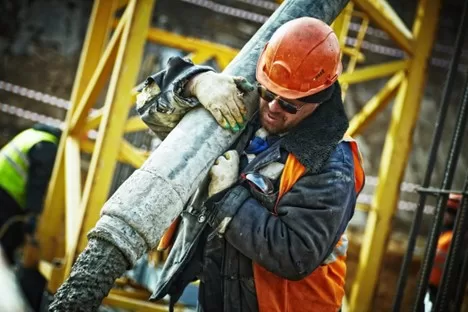In Portland, the construction industry has expanded more rapidly than the national average in the United States. Over the next ten years, it’s anticipated that the sector will create upwards of 13,200 new jobs, marking a 17% growth rate. Moreover, this figure could rise further depending on the availability of funds for major projects.

The construction sector plays a significant role in the Portland-Vancouver metropolitan area’s economy. With over 77,000 individuals employed and a total payroll amounting to $6.8 billion, it constitutes nearly 7% of the private-sector employment and 7% of the total payroll in the region.
While these statistics paint a compelling picture, construction projects can be complex and dynamic, where success hinges on a multitude of factors. From small residential buildings to towering commercial structures, the path to a successful project is paved with challenges and opportunities.
Effective execution of a construction project is not simply about adhering to timelines and budgets; it’s about creating an environment where efficiency, safety, and quality converge. A successful project manager recognizes that a construction site is more than a workplace—it’s a micro-ecosystem that requires careful planning and strategic decision-making.
Whether it’s managing resources, ensuring worker satisfaction, or meeting stringent compliance standards, every aspect plays a crucial role. Below, we’ll delve into five practical and effective tips to guide project managers and teams toward the successful completion of construction projects.
1. Ensuring Adequate On-Site Facilities
One of the less glamorous yet crucial aspects of managing a construction site is ensuring the availability of adequate on-site facilities for workers. It’s about creating a functional environment that caters to the basic needs of those on the ground.
A prime example is the provision of porta-potties. These portable restrooms are not only a matter of convenience; they’re a necessity for maintaining hygiene and comfort on-site.
In busy urban areas like Portland, the question isn’t simply about having porta-potties but also about who rents them. Porta-potties in Portland – who rents them? This question might have crossed the minds of many individuals, and unsurprisingly, apart from construction sites, porta potties are also rented for sports fields, farming areas, and special events.
Renting from reliable providers ensures that the units are well-maintained, hygienic, and meet the necessary standards. The presence of these facilities also demonstrates a commitment to worker welfare, which can boost morale and productivity.
Furthermore, having porta-potties readily available helps in adhering to health and safety regulations, preventing potential legal issues.
Read Also:
2. Detailed Project Planning and Time Management
The cornerstone of any successful construction project is its blueprint—not just in terms of architectural design but in its project planning and time management.
A well-crafted project plan outlines every stage of the construction process, from inception to completion. It should detail timelines, milestones, resource allocation, and contingency plans. This roadmap is crucial for keeping the project on track and identifying potential bottlenecks early.
Effective time management goes hand-in-hand with planning. It’s about optimizing workflows, ensuring that each team knows its schedule, and adapting to unforeseen delays. Utilizing tools like Gantt charts or project management software can be invaluable in this regard.
They help in visualizing the timeline, tracking progress, and facilitating communication among teams. Remember, a delayed project can escalate costs and impact client satisfaction, so managing time effectively is not just a matter of scheduling—it’s a critical component of project success.
3. Effective Communication and Team Coordination
Communication is the lifeline of any construction project – the complexity and scale of construction work demand clear, concise, and constant communication. It’s about ensuring that everyone, from the architects to the laborers, from suppliers to stakeholders, is on the same page. Miscommunication can lead to errors, delays, and increased costs.
Effective team coordination begins with establishing clear communication channels. Regular meetings, updates, and reports are essential. It’s also important to foster an environment where feedback is encouraged and addressed. Technology plays a key role here; tools like mobile communication apps and project management software can enhance the flow of information.
Moreover, understanding the dynamics of your team and respecting the expertise of each member can significantly improve coordination. Recognizing the strengths and weaknesses within the team and delegating tasks accordingly can lead to more efficient operations.
Remember, a well-coordinated team is like a well-oiled machine, capable of overcoming challenges and achieving objectives with greater ease.
4. Emphasizing Safety and Compliance
Safety is paramount in construction. A safe construction site protects workers, prevents accidents, and maintains a positive reputation. Emphasizing safety starts with a comprehensive safety plan that addresses potential hazards and outlines procedures to mitigate them. It includes regular safety training for all workers, ensuring they are aware of the risks and know how to handle equipment safely.
Compliance is another crucial aspect. Construction projects must adhere to a range of local, state, and federal regulations. These might include building codes, environmental regulations, and labor laws. Staying compliant not only avoids legal issues but also ensures the project is built to standard and is safe for future use.
Regular safety audits and inspections can help maintain high safety standards and compliance. It’s also important to foster a safety culture where every worker feels accountable for not only their safety but also that of their coworkers. Encouraging open communication about safety concerns and promptly addressing them reinforces the importance of this aspect of the project.
5. Utilizing Technology and Innovative Solutions
The construction industry is rapidly evolving, and technology plays a significant role in this transformation. Leveraging technology can lead to improved efficiency, accuracy, and cost savings. For instance, Building Information Modeling (BIM) allows for the creation of detailed digital models of a construction project.
Drones are another technological tool that can be incredibly useful. They can be used for site surveys, monitoring progress, and ensuring that work is proceeding as per the plan. Similarly, project management software can streamline communication, scheduling, and documentation, keeping everyone aligned and informed.
Innovation is not just about technology; it’s also about embracing new construction methods and materials that can improve efficiency and sustainability. For example, modular construction, where parts are built off-site and then assembled on-site, can significantly reduce construction time.
Conclusion
In conclusion, the successful execution of a construction project relies on a blend of careful planning, effective communication, adherence to safety standards, and embracing technological advancements. By focusing on these key areas, project managers can navigate the complexities of construction projects and steer them toward timely and successful completion.









